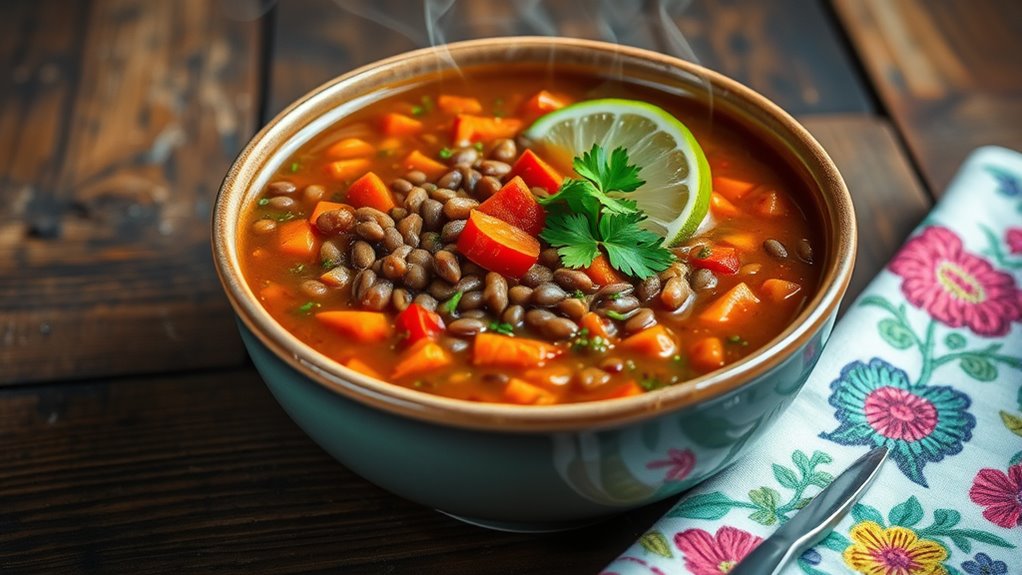To make a Cuban-style lentil soup, you start by sautéing onions, garlic, and optionally carrots in olive oil until fragrant and lightly browned. Stir in rinsed lentils, a pinch of salt, and enough broth to coax tenderness, then add bright canned tomatoes and a bay leaf. Let it simmer gently, skimming foam, until the lentils melt into a creamy bite. A splash of vinegar or cumin brightens the finish, and you’ll discover more layers as you keep exploring.
Ingredients and Quantity
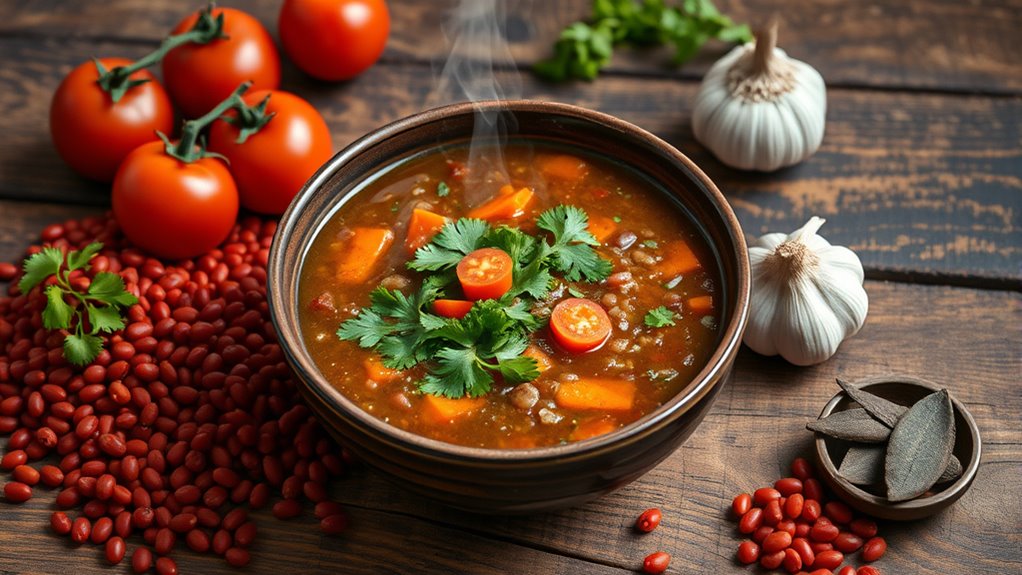
For a hearty lentil soup, gather these core ingredients: red or green lentils, onions, garlic, carrots, celery, canned tomatoes, vegetable or chicken broth, olive oil, and a bay leaf. You’ll notice the lentil varieties offer texture and bite, while Cuban spices spark brightness without overwhelming the soul. Measure with care, align flavors, and let freedom guide your hand as you prep.
| Core Ingredient | Purpose | Sensation |
|---|---|---|
| Lentils (red/green) | Body and heartiness | Honest, earthy |
| Onion & garlic | Aromatics | Warm, inviting |
| Carrot & celery | Sweet depth | Crisp, grassy |
| Tomatoes & broth | Sauce, cohesion | Savory, bright |
| Olive oil & bay leaf | Finish, aroma | Smooth, lingering |
Preparations
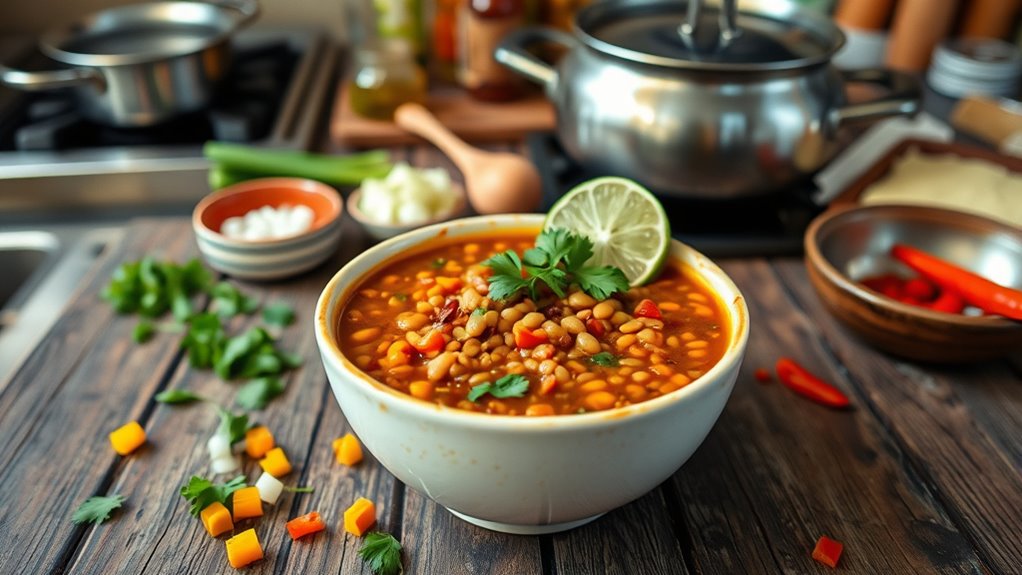
To prep, rinse the lentils and pick out any debris, letting the smooth grains slip cleanly through your fingers. You’ll feel their cool weight and hear a soft tumble as they settle. Next, soak briefly if you like, or skip to simmer, knowing both paths suit Cuban-inspired flavors. Your preparation methods center on balance: a gentle rinse, timed soaking, and a modest boil that preserves nutty sweetness without bitterness. As aromas awaken, measure aromatics and spices with calm intention, then adjust salt and acidity to taste. For ingredient substitutions, swap red lentils for quicker tenderness or use vegetable stock if you’re avoiding meat. Keep notes handy to repeat your preferred ratios and preserve the dish’s freedom and integrity.
Kitchen tools or Kitchenware Required
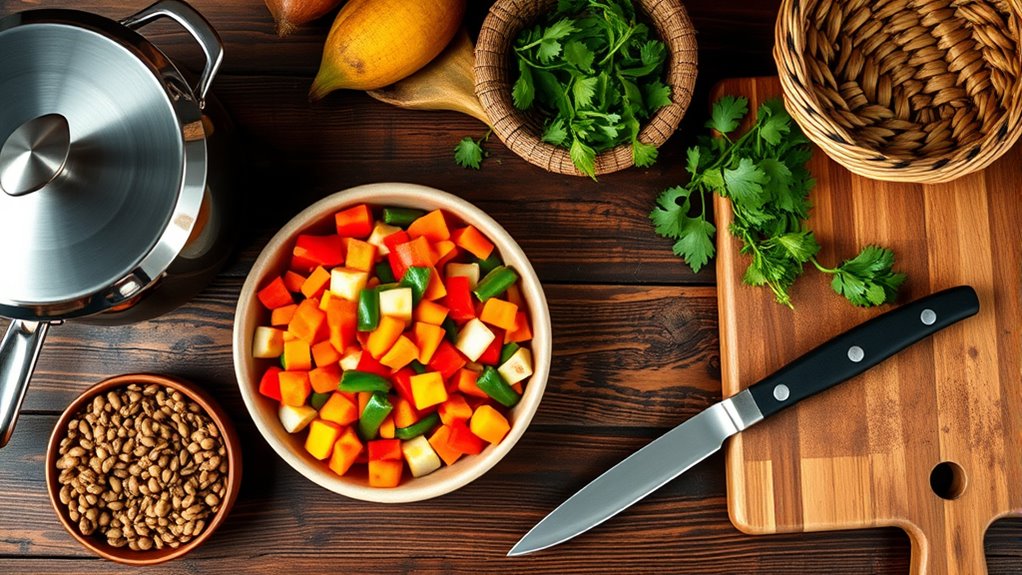
A simple set of tools will keep your Lentil Soup steady on the stove: a sturdy pot with a lid, a sharp chef’s knife, a cutting board, and a measuring cup or spoon for precise additions. You’ll feel the rhythm as you prep, the sizzle of oil, the aroma of onion and garlic, and the steady, grounding weight of metal in your palm. In the kitchen, select your preferred blender types and consider pot materials for heat distribution and cleanup ease. Table below highlights essentials.
| Tool category | Why it matters |
|---|---|
| Blender types | Aids puree texture to your likeness |
| Pot materials | Impacts heat, durability, and flavor retention |
How to Cook
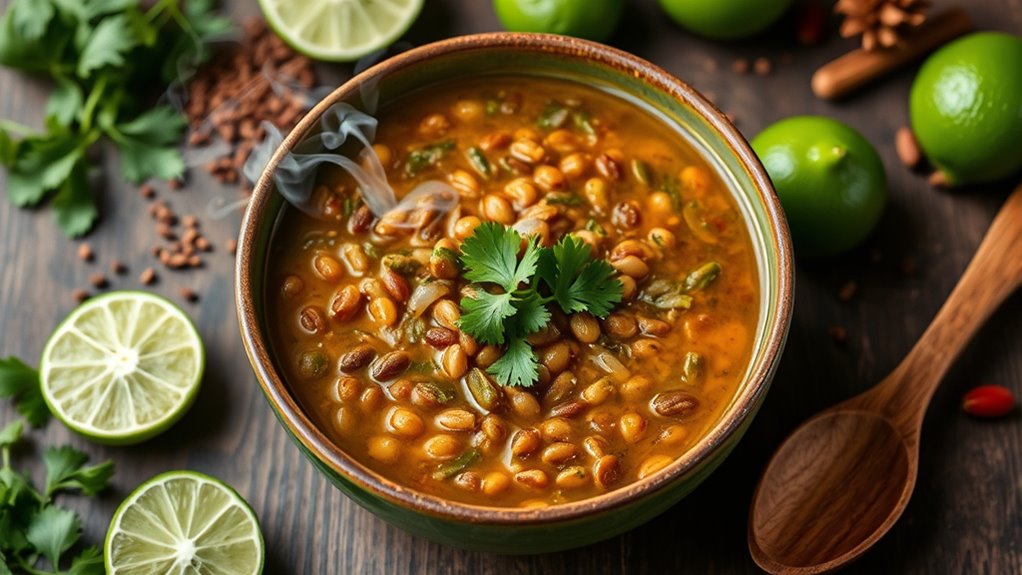
- Sauté onions, garlic, and optionally carrots in a splash of oil until they become sweetly translucent and just start to brown.
- Stir in rinsed lentils, a measured pinch of salt, and enough broth to encourage tenderness.
- Simmer the mixture gently, avoiding a hard boil to keep flavors intact.
- Taste and adjust seasoning with a splash of vinegar or a pinch of cumin to enhance the flavors.
- As lentils soften, skim off any foam that forms on the surface.
- Allow the soup to thicken naturally, stirring occasionally for an even texture.
- Use cooking intuition: layer aromatics, monitor heat, and test the consistency throughout.
- Experiment with flavor variations like smoked spices, cilantro, or lime to customize the soup to your preference.
How to Serve
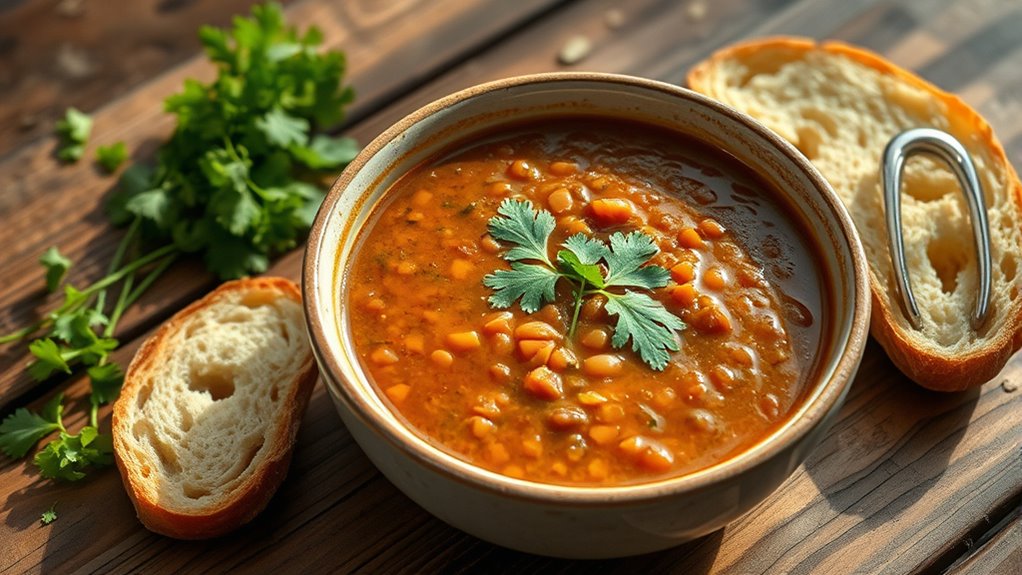
Ladle the lentil soup into warm bowls, letting its aromatics rise and invite you with a gentle steam. You’ll feel the comfort before the first bite, savoring the balance of earthy lentils and bright herbs. To serve with intent, keep these steps clear and intentional:
Ladle lentil soup, inviting steam, savor earthy balance and bright herbs.
- garnishing options: crown the bowls with fresh cilantro, a squeeze of lime, and a drizzle of olive oil for brightness.
- serving temperature: aim for hot, not steaming, to preserve texture and flavor.
- texture contrast: offer crusty bread or rye croutons for a satisfying bite.
- portion rhythm: ladle evenly, guiding each spoonful to your senses and soul.
Tips
Sticking to a few smart tricks can elevate your lentil soup from simple sustenance to cozy nourishment. Start by choosing modest, layered flavors: sauté onions, garlic, and bell pepper in olive oil until they glow. Add rinsed lentils and simmer in low-sodium broth, letting spices bloom as the steam thickens the pot. For cooking techniques, simmer gently, not vigorously, so the lentils stay intact and creamy. Balance salt with a touch of acid—lime juice or cider vinegar brightens the spoonful. Introduce a bay leaf, cumin, and a whisper of smoked paprika for warmth, then finish with fresh cilantro or parsley. Flavor enhancements come from a splash of olive oil just before serving. Keep the texture rustic, yet comforting, and savor your freedom in every bowl.
Food Value and Benefit
Lentil soup offers a nourishing and wholesome meal, rich in essential nutrients that support overall health. This comforting dish is packed with fiber, plant-based protein, and vital minerals like iron and folate. The slow simmering process enhances its flavor and texture while preserving its nutritional value, providing slow-release energy that helps maintain stable blood sugar levels. Eating lentil soup can promote digestive health, sustained energy, and improved mood.
Benefits of eating lentil soup:
- High in dietary fiber, promoting healthy digestion and gut balance
- Excellent source of plant-based protein, supporting muscle repair and growth
- Rich in iron, aiding in oxygen transport and preventing anemia
- Contains folate, essential for cell growth and brain function
- Provides slow-release energy for steady appetite control and enhanced mood
Vitamins and minerals in lentil soup:
- Iron
- Folate (Vitamin B9)
- Potassium
- Magnesium
- Vitamin B6
Frequently Asked Questions
Can I Substitute Lentils With Another Legume for This Cuban Soup?
Yes, you can substitute another legume, no problem. Substituting legumes adds texture and flavor, and you’ll notice different notes in aroma and body. For variety, explore alternative beans, noting how they change the broth’s depth and mouthfeel.
What’s the Origin of Lentil Soup in Cuban Cuisine?
Lentil soup’s origin in Cuban cuisine blends immigrant influences with Caribbean flavors, shaping Cuban history you can taste in each spoonful. You’ll sense barley, spice, and simmered storytelling, while exploring lentil variations that celebrate freedom, resilience, and community.
Is This Soup Dairy-Free or Vegan-Friendly?
“Where there’s a will, there’s a way.” Yes, this soup can be dairy-free and vegan-friendly: use dairy alternatives and vegan ingredients, savoring notes of cumin and lime, and feel freedom as you nourish with plant-based goodness.
How Long Can Leftovers Be Refrigerated Safely?
Leftovers last about 3–4 days in the fridge. For best flavor, store in airtight containers, label the date, and reheat gently. Leftover storage should feel safe, and you’ll taste the calm of safe refrigeration.
Can This Recipe Be Made in a Slow Cooker?
Yes, you can. In a slow cooker, you’ll enjoy slow cooker benefits like hands-off simmering and rich flavors, while the soup consistency stays smooth with gentle, steady heat you control, embracing freedom in your kitchen.
